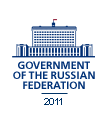The Krasnodar Territory (Kuban) is a constituent entity of the Russian Federation located in the Kuban-Azov lowland and the north-western part of the Caucasus Mountains. It is Russia's southernmost region. To the south and the west it is bordered by the Azov and Black seas, respectively.
Kuban covers an area of 76,000 sq km and its population tops 5.1 million. Krasnodar is the territory's administrative centre.
Since 2009, the Krasnodar Territory has been one of Russia's six economic growth engines, according to the Regional Development Ministry. In 2010, the region ranked sixth in Russia in terms of gross regional product: its share of the country's GDP edged up to 2.7% (999.8 billion roubles) from 2.4% a year earlier. In 2010, the average monthly salary increased to 17,000 roubles, up almost 12% on the previous year. Unemployment is currently running at 1%.
Principal industries are oil and gas production, mining (iodide-bromine water, marl, marble, limestone, sandstone, iron and apatite ores), manufacturing and energy. By the end of the first quarter of 2011, the industrial production index had climbed by 10%.
The region's economic growth is largely based on the invariably high level of investment. In 2010, investment in fixed assets grew 18.2% compared with an average of 6% for Russia. This allowed the region last year to boost its share of domestic investment to 5.4% from 4.5% a year earlier. With investment in the region totaling 492.7 billion roubles, the region ranks first, investment-wise, among the country's southern regions and third in Russia. It accounts for 62% of all the investment in the Southern Federal District.
The growth rate in agriculture is one of Russia's highest. The region accounts for 2.2% of the country's farmland and almost 8% of its gross agricultural production. It is Russia's leading producer of grain – 15% of overall domestic production - sugar beets, rice and sunflower.
With 40 wineries in the region, Kuban wine-makers are distributing more product into foreign markets in Europe, Asia and America.
Today, the region focuses on poultry production and cattle breeding on top of pig farming and dairy cattle breeding - its traditional priorities in agriculture. It is the country's second largest producer of meat, poultry and eggs and second to none in the south of Russia.
The region's spas and health resorts offer a combination of a unique landscape and climate, a variety of health enhancement factors, and a rich historical and cultural heritage. Also, the region has high hopes for developing various types of tourism - from traditional to extreme.
The region has 117 institutes of higher education and their branches, 124 vocational training centres, 70 vocational colleges and private schools, 1,481 secondary schools, 250 advanced training centres for children, and 1,518 preschool childcare centres, including 34 orphanages and childaren's homes.
The region has a well-developed system of patient-care and diagnostic facilities, as well as skilled medical professionals: 271 hospitals, 302 outpatient clinics and over 1,000 rural patient-care and first-aid centres.





